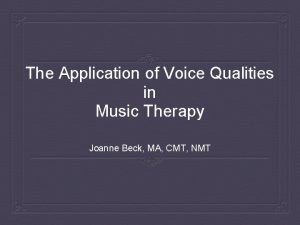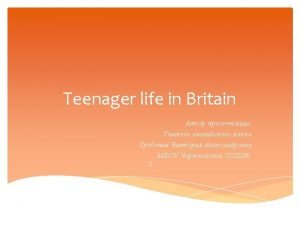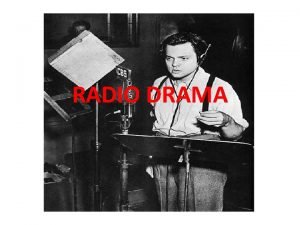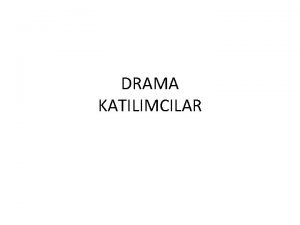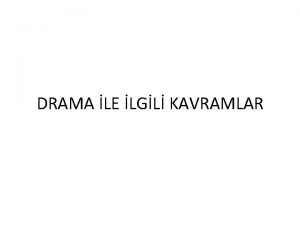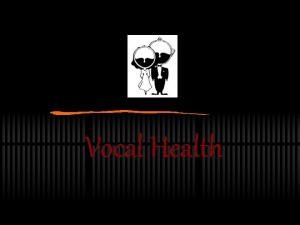Drama Vocal Keywords and Techniques Vocal techniques keywords





- Slides: 5

Drama Vocal Keywords and Techniques. Vocal techniques - keywords: What does it mean? When can I use it? Pitch • How high or low your voice is. • Child, adult, male or female. • Emotional change – happy / sad / angry / excited. Pace • How fast or slow you speak. • Emotional change – happy / sad / angry / excited. • Giving someone some news. • Telling your friend a secret. Dramatic Pause • A planned break in a sentence or passage. • To mark an important meaning, draw attention to an ending that is uncertain. Projection • The audience can hear you. • All of the time. • The strength and power of your voice. Diction • Speaking clearly. • Pronouncing words correctly. • Using your tongue teeth and lips to speak. • All of the time so that your audience can clearly understand what you are saying. Dynamics • How loud or quiet your voice is. • Emotional change – happy / sad / angry / excited. • Giving someone some news. • Telling your friend a secret. Emphasis • To stress / highlight keywords within a sentence. • When I grow up I’m going to be an astronaut.

Drama Physical Keywords and Techniques. Physical techniques - keywords: What does it mean? When can I use it? Direction • The way that you are moving. example forwards, backwards, diagonally or sideways. For • During your performance. • Blocking your piece and writing down your stage directions. Gesture • Movement of the body to express an idea, meaning or intention. • Waving to say hello. • Hand shake Body Awareness • To use either all or part of your body to show your character. • Movement of character that you are performing. • Male / female / young / old / moods and emotions. Facial Expression • Using your face to show your characters mood and emotions. • Character you are performing. • Male / female / young / old / mood and emotion. Eye Contact • Looking at other actor/s on stage or the audience. • All of the time, so that the audience and actors know where your focus is. Proximity • The amount of space between yourself and the other actors on stage or the audience. • All of the time, so that the actor doesn’t bump into anyone else or the scenery. Posture • How you stand to create your character. • All of the time to create and stay in character.

Musical Elements. Keywords: What does it mean? Timbre or tone colour The sound quality of an instrument or voice. Pitch How high or low a note sounds. Texture The number of instruments playing at the same time. • Many instruments = thick texture. • Few instruments = thin texture. Dynamics How loud or quiet a piece of music is played. Tempo How fast or slow a piece of music is played. Duration How long or short a note is. Structure The plan of the music. Silence The gaps, rests and breaks in the music.

Music Rhythms. What does the rhythm look like? What is it called? How many beats does it have? Semibreve • 4 beats Minim • 2 beats Crotchet • 1 beats Quaver • ½ beats Semiquaver • ¼ beats Demisemiquaver • 1/8 beats

Music Pitch and the music keyboard. To remember the notes in the lines and spaces use the rhyme for the lines and the word for the spaces. The note C can be found to the left of 2 black notes on the music keyboard. The note F can be found to the left of 3 black notes on the music keyboard. If you put the music notes from the lines and spaces with the notes on the keyboard, you can see how they all link together.

